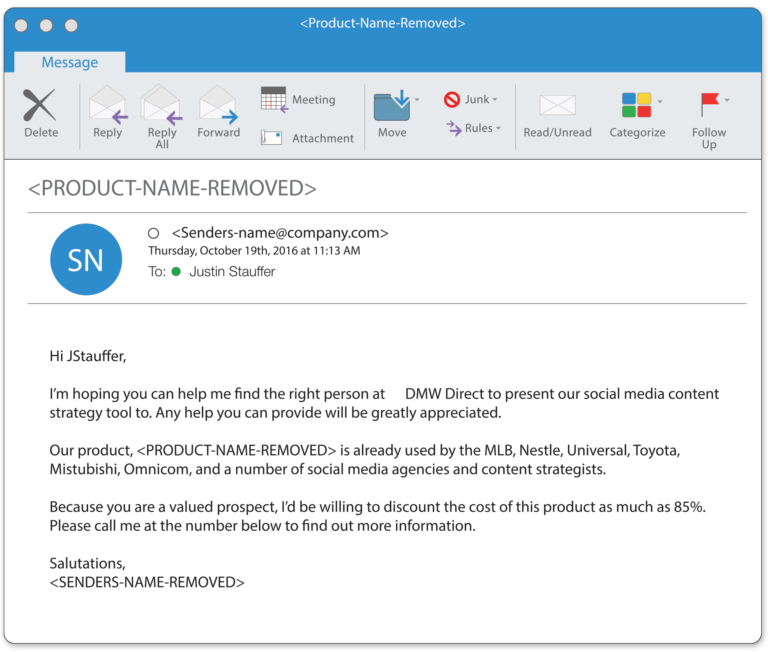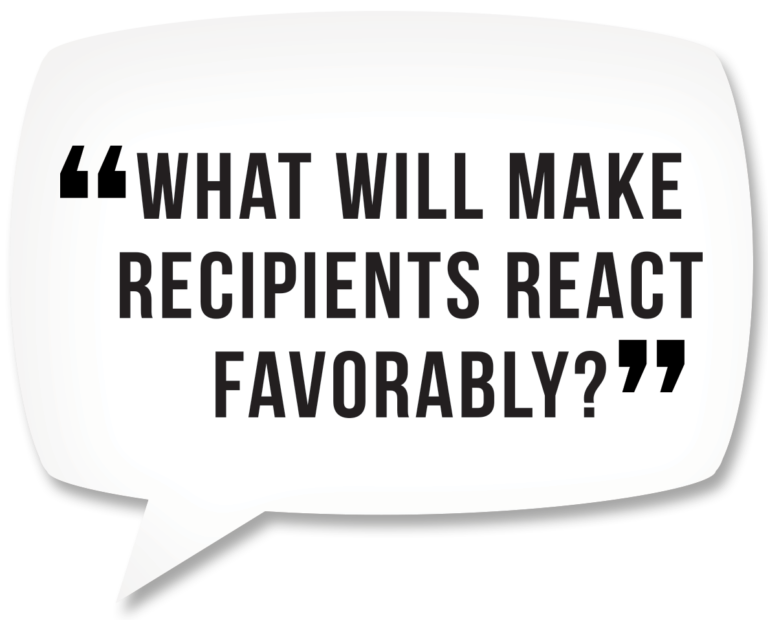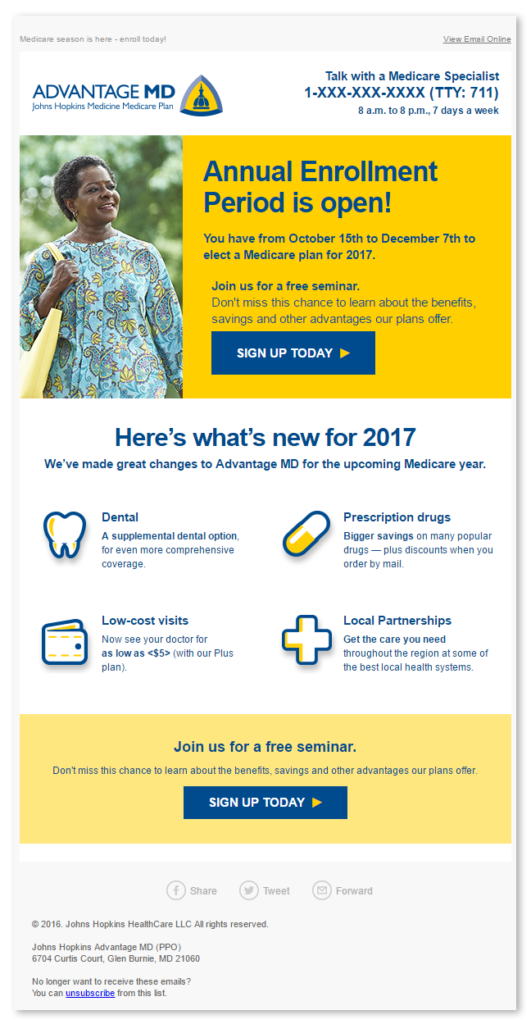Avoid Being Guilty of Dreaded Email Sins!
I typically receive hundreds of emails per day, many of which are promotional emails that I will never open. One recent email stood out for the wrong reasons and clearly illustrates why so many email campaigns fail.
You’re likely wincing now as I did when I first opened this message. The sad reality is that emails like this are sent because the marketers who send them are rushed (or maybe even a bit lazy). This is a missed opportunity to make a valuable connection and impact!
Here are seven steps to follow to avoid these and other email sins.
1. Have a defined strategy.
Without a clearly defined strategy, most tactics will fall flat. Within email marketing you should have a defined objective in mind, such as generating more leads, creating a sales opportunity, increasing loyalty among your customers, or demonstrating thought leadership.
In the above example, the sender attempted to engage with me by asking if I was the appropriate person within the agency to target. Then, without providing any value while name-dropping big brands, attempted to sell me on their product.
2. Know your audience.
It’s imperative to know your audience before you send them a message. Text-based emails can work well (in select cases even outperforming HTML emails) as long as they appear sincere, are personalized, and sent only to known recipients. If you email me and indicate that I am a “valued prospect,” you should already know if I am the appropriate contact within my organization. If not, simply remove the line altogether.
Consider sending targeted emails based on particular segments (e.g., industry, title, geography) to increase conversion. Otherwise (and to my initial point), you will demonstrate that you know nothing about me as a recipient.
Before developing the messaging, ask yourself:
- What will make recipients react favorably?
- Are certain audience segments more likely to respond than others?
- How often will my list segments expect to hear from me?
- What do I want them to do when seeing this message before they reach out to me?
- Can they go online to find more information?
3. Provide value for your recipients.
Offering to discount your services by 85% sounds desperate and means nothing to me if I don’t know what your “social media content strategy tool” does in the first place. Does your software:
- Identify the most appropriate content to post within my respective channels?
- Determine when to post it?
- Write content for me?
- Locate my top influencers?
Based on this email alone, I have no idea. Why would I waste my time calling or emailing you to find out? While the email included an actual web address, the “burden” was on me to want to research more about the company to determine if it was something I wanted to pursue.
Moreover, will I unsubscribe from your emails now (probably) or give you a chance to redeem yourself later (unlikely)? This is a lost opportunity.
 Here’s an example of a clearly articulated, and well-formatted email.
Here’s an example of a clearly articulated, and well-formatted email.
4. Format for the masses.
Within many email applications, unless recipients have the sender’s email in their address book, images within emails will not download by default. Make sure that your email message does not fall apart completely without images displaying. You may wish to provide multiple calls-to-action within your email that allow recipients to access a key portion of your website or landing page. Otherwise recipients may not take the correct action.
How does your email render within various devices? It’s naïve to think that everyone will view your email using a desktop application like Outlook. In fact, the majority of emails are now opened on mobile devices first (even though the majority of conversions still take place within desktop). Most people use a variety of devices throughout the day to access email (mobile, work vs. home computer), so optimize your message for the masses.
5. Consider their online experience.
Email is a one-way communication stream unless the recipient takes an action such as replying or clicking through to a landing page.
Let’s say your recipient reads your email. Provide at least one path for the person to click to find out more about your product, service or brand, otherwise the dialog is over. In this example, the product did not have an associated landing page. The only URL was within the individual’s email signature and was not optimized for mobile, which prevented me from easily clicking through. This is a fatal flaw in today’s environment.
Another reason to get recipients online is that you can collect more analytic data there than in email applications.
6. Clean your data.
CRM tools are fantastic, but they’re only as good as the data within them. Marketers must review their CRM data for accuracy and segregate records that were clearly pulled from third-party lists.
If you only have “JStauffer” for your recipient, you should attempt to gather additional information before sending. Consider offering something of value in exchange for getting me to update my information (e.g., provide a free whitepaper and request that I update my information within a partially pre-populated contact form). Or simply remove the salutation altogether. Otherwise it’s clear that you don’t know me and that I’m not a “valued prospect” (which was evident when you admitted that you weren’t sure if I was the correct contact).
Compliance is another concern. Flag incomplete names such as “JStauffer” on your lists to verify the source of the contact before you launch your email campaign to ensure that you have permission. Current US CAN-SPAM email laws actually allow for initial solicitation without permission. However, countries like Canada and many within the EU prohibit this. Some laws even carry steep penalties for sending SPAM.
7. Proofread. Proofread. Proofread!
It should be a no-brainer to have someone else proofread your work. Spellcheck will capture most mistakes, but it is not perfect.
Tip: Send an email to yourself before blasting it broadly to a seeded list. This gives you an opportunity to catch basic proofreading errors (e.g., misspelling “Mitsubishi,” the extra spacing before “DMW Direct” and ending the first sentence with a preposition) and avoid embarrassment.
When planning your next email marketing campaign, remember to follow common sense and think about the individual recipients who are receiving your emails. Only send information that is legal, relevant, and compelling. Otherwise, unless your email stands out for the wrong reasons and I write a blog post about it, it will be deleted along with the other emails that I never open.
Learn more about how DMW Direct can help your next digital direct response campaign.